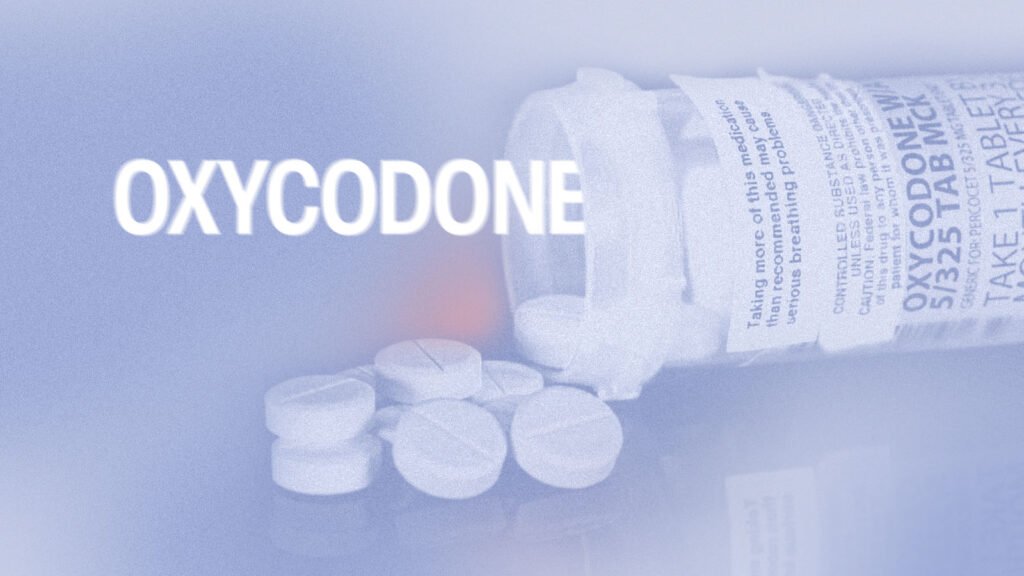Oxycodone is a prescription opioid commonly used to manage moderate to severe pain. As with many medications, understanding how long oxycodone stays in your system is essential for managing its effects, preventing misuse, and avoiding potential drug interactions or side effects. This article will cover the factors affecting how long oxycodone remains in your body, detection times in various drug tests, and tips for safe use and detoxification.
In this blog, we are going understand how long does oxycodone stay in your system, its factors, potential risks and also how to detoxify the body of oxycodone.
Understanding Oxycodone
What is Oxycodone?
Oxycodone is an opioid analgesic prescribed for pain relief. It is often sold under brand names like OxyContin, Percocet (a combination of oxycodone and acetaminophen), and others. Classified as a controlled substance, oxycodone binds to opioid receptors in the brain, reducing pain perception and creating a sense of euphoria.
Common Uses
Doctors prescribe oxycodone to treat:
- Post-surgical pain
- Chronic pain conditions
- Severe injury-related pain
Due to its potency, oxycodone carries a high risk of dependency and addiction, making proper dosage and monitoring critical.

How the Body Processes Oxycodone
When you take oxycodone, your body metabolizes it in a specific sequence:
- Absorption: Oxycodone is absorbed through the gastrointestinal tract, reaching peak concentration in the bloodstream within 1-2 hours of ingestion.
- Distribution: The drug is distributed throughout your body, affecting your central nervous system to relieve pain.
- Metabolism: The liver breaks down oxycodone into metabolites like noroxycodone and oxymorphone.
- Excretion: The kidneys expel the drug and its metabolites through urine.
How Long Does Oxycodone Stay in Your System?
The amount of time oxycodone remains detectable in your system depends on its half-life—the time it takes for half the drug to leave your body. On average:
- Immediate-release oxycodone: 3-4 hours half-life
- Extended-release oxycodone: 7-9 hours half-life
It generally takes 4-5 half-lives for a drug to be fully eliminated from the body. Based on these values:
- Immediate-release forms can take 15-20 hours to clear.
- Extended-release forms may take 24-36 hours.
Detection Windows in Drug Tests
Different drug tests can detect oxycodone for varying durations:
| Test Type | Detection Timeframe |
|---|---|
| Urine Test | 3-4 days |
| Blood Test | Up to 24 hours |
| Saliva Test | 1-4 days |
| Hair Follicle Test | Up to 90 days |
1. Urine Tests
Urine tests are the most common method for detecting oxycodone. Typically, oxycodone and its metabolites can be found in urine for up to 72-96 hours after the last dose.
2. Blood Tests
Blood tests detect oxycodone almost immediately after ingestion but are limited to a detection window of 24 hours due to the drug’s short presence in the bloodstream.
3. Saliva Tests
Oxycodone is detectable in saliva within minutes of use and remains present for up to 4 days.
4. Hair Follicle Tests
Hair follicle testing has the longest detection window, with oxycodone remaining traceable for up to 90 days. However, it is less commonly used due to its cost.

Factors Affecting How Long Oxycodone Stays in Your System
Several factors influence the duration oxycodone remains detectable in your body:
1. Dosage and Frequency
Higher doses and frequent use result in longer retention times. For example, individuals on extended-release formulations or chronic pain management regimens may retain the drug for more extended periods.
2. Metabolism Rate
Your metabolic rate directly impacts how quickly your body processes and eliminates oxycodone. People with faster metabolisms clear the drug more rapidly.
3. Liver and Kidney Function
Since the liver metabolizes oxycodone and the kidneys excrete it, impaired organ function can slow clearance, prolonging the drug’s presence in the body.
4. Age
Older adults often have slower metabolic rates and organ function, meaning oxycodone may linger in their systems longer than in younger individuals.
5. Body Fat and Hydration
Oxycodone can accumulate in fat cells, extending its elimination time. Staying hydrated helps speed up the excretion process.
6. Drug Interactions
Other medications, especially those affecting liver enzymes (e.g., CYP3A4 inhibitors), can alter how quickly oxycodone is metabolized.
Potential Risks of Oxycodone in Your System
1. Overdose Risks
Taking more oxycodone than prescribed or combining it with other central nervous system depressants (like alcohol or benzodiazepines) increases the risk of respiratory depression, coma, or death.
2. Dependency and Withdrawal
Oxycodone use, especially long-term, can lead to physical dependence. When the drug leaves your system, you may experience withdrawal symptoms, such as:
- Anxiety
- Muscle aches
- Nausea
- Insomnia
3. Drug Testing Concerns
If you are required to take a drug test, understanding oxycodone’s detection windows is critical for compliance. Always disclose prescription use to the testing agency.

How to Safely Detoxify Oxycodone
If you are looking to clear oxycodone from your system, here are some tips:
1. Stay Hydrated
Drinking plenty of water helps flush out metabolites through urine.
2. Exercise Regularly
Physical activity can boost metabolism, aiding in faster elimination.
3. Avoid Alcohol and Other Substances
Alcohol and drugs can slow the detoxification process and increase the risk of complications.
4. Seek Medical Guidance
Detoxing from oxycodone can be dangerous without professional help, especially for heavy users. Speak to your healthcare provider for a supervised detox plan.
Tips for Safe Oxycodone Use
- Follow Prescriptions Strictly: Never exceed the prescribed dose or frequency.
- Avoid Mixing with Alcohol: This can lead to life-threatening respiratory depression.
- Communicate with Your Doctor: If you experience side effects or need a dosage adjustment, consult your physician.
- Store Securely: Keep oxycodone in a safe place to prevent misuse by others.
When to Seek Medical Attention
Seek immediate medical attention if you experience:
- Difficulty breathing
- Severe drowsiness
- Symptoms of overdose (e.g., blue lips, unresponsiveness)
For withdrawal symptoms, a healthcare provider can offer medications like buprenorphine or methadone to ease the process.

Conclusion
The length of time oxycodone stays in your system depends on several factors, including dosage, metabolism, and the type of drug test used. While it may leave your bloodstream relatively quickly, it can remain detectable in urine, saliva, and hair for longer periods. Proper use, adherence to your doctor’s guidance, and awareness of its risks can help you safely manage oxycodone’s effects.
If you have concerns about oxycodone in your system, whether for health, drug testing, or recovery purposes, consult with a healthcare professional for personalized advice.
1. Can drinking water help flush oxycodone out of my system faster?
Yes, staying hydrated can aid in the excretion of oxycodone and its metabolites through urine. However, drinking excessive amounts of water won’t drastically speed up the process. The body still requires time to metabolize and eliminate the drug naturally.
2. Does oxycodone show up as an opioid on standard drug tests?
Yes, oxycodone is classified as an opioid and is commonly detected in drug tests designed to screen for opioids. However, some tests specifically check for oxycodone and its metabolites, as it may not always trigger a positive result for general opiate tests.
3. How long after taking oxycodone can I drive safely?
It’s generally unsafe to drive while oxycodone is active in your system due to its sedative effects, which can impair coordination and reaction time. For immediate-release oxycodone, you should wait at least 6-8 hours after the last dose. For extended-release versions, consult your doctor for specific guidance.
